MBeans deprecated in favor of Pega API
Valid from Pega Version 8.1
The use of MBeans for cluster management has been deprecated, although MBeans will continue to function for legacy deployments. The recommended best practice for automating system management is to use the Pega API. For more information, see Pega API.
Gadget configuration by using IAC gateway console is no longer supported
Valid from Pega Version 7.2.1
The Internet Application Composer (IAC) gateway was deprecated in Pega Platform™ 7.2.1 and is no longer supported. The IAC was used to embed a Pega Platform application, such as a gadget, on the pages of a web application that was located on your intranet, extranet, or internet site.
Upgrade impact
After an upgrade to Pega Platform 8.5, the configuration of gadgets through the IAC gateway console is no longer supported.
What steps are required to update the application to be compatible with this change?
To make subsequent changes to your current web mashup, use Pega Web Mashup.
For more information, see Tutorial: Creating a mashup with Pega Web Mashup.
Upgrading to the secure threading mechanism for email bots
Valid from Pega Version 8.1
In Pega Platform™ version 8.6, Pega Email Bot™ includes a more secure threading mechanism to help track emails from customers and other stakeholders in separate threads for an email triage case.
Upgrade impact
If you upgrade from Pega Platform version 8.5 or earlier, in which you configured an Email channel, perform the following steps to ensure that your system uses the new secure threading mechanism:
- Update the service email rule that the system uses to send an email reply as the initial acknowledgment.
- Update the email reply template in the data transform rule that the system uses when a customer service representative (CSR) sends the reply.
For more information about creating an initial acknowledgment email and email reply template, see Creating outbound email templates. For more information about the secure threading mechanism, see Use a secure threading mechanism in emails.
What steps are required to update the application to be compatible with this change?
For the initial acknowledgment email used by your email bot, update the service method for your email listener rule. On the Response tab for this service email rule, expand the Message contents section. In the Message data section, you specify the rule that defines the structure of the content of the email body. In Pega Platform version 8.6, you use for this purpose the pyEmailAcknowledgement correspondence rule that takes into account the selected built-in template. This template includes the security code tag that the system uses for the secure threading mechanism. If your application uses a different rule in the Message data section, update this definition to match one of the built-in correspondence template rules, for example, EmailAckTemplate_Clear.
The pySetEmailBotReplyTemplate data transform rule sets the name of the email correspondence rule that the system uses as the email reply template. If you do not want to use the default approach using the Classic, Cobalt, or Clear outbound email template themes, override this data transform rule to set the email correspondence rule name for the Param.ReplyTemplate target in the Source column field.
For more information about how to update the service email rule and the data transform rule to ensure that your system uses the secure threading mechanism, see Upgrading to the threading mechanism available in the 8.6 version.
Support for building apps as Android App Bundles
Valid from Pega Version 8.6.1
As of August 2021, Google Play Store requires that you submit new apps in the Android App Bundle publishing format instead of the APK format. You can now build Pega mobile apps in the Android App Bundle format so that they comply with this new requirement.
For more information about generating installation packages for Pega mobile apps, see Generating installation packages. For more information about the Android App Bundle publishing format, see the Android for Developers documentation.
Word merge support with Microsoft Silverlight plug-in
Valid from Pega Version 7.1.3
PRPC features that integrate with the Word merge capability are now cross-browser. ActiveX controls (which are only compatible with IE) have been replaced with Microsoft Silverlight. This plug-in must be downloaded separately from Microsoft, as it is not shipped with PRPC.
Some common PRPC features affected by this change include the Application Document Wizard, App Profile, Specifications Landing Page, Specification form, and Case Type Landing Page.
Prior to using these features, Users of PRPC 7.1.3 need to set up their client system(s) as follows:
1. Install Silverlight plug-in
Follow the PRPC prompt to install Silverlight when you attempt to use the Word merge feature:
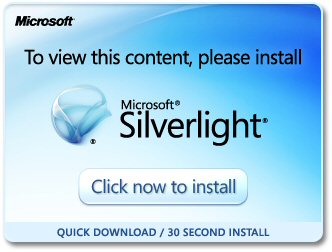
Or download package directly: www.microsoft.com/silverlight/
2. Install PRPC prerequisites
Microsoft Internet Explorer (IE) browsers automatically detect the need for PRPC prerequisites and will prompt for install:
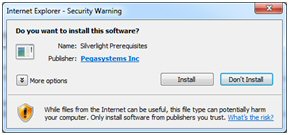
Non-IE browsers will load a pop-up window when the user attempts to use the Word merge feature. Use the link to manually download PRPC prerequisites:
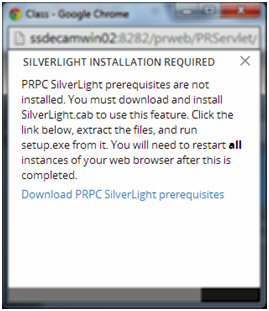
Extract the .zip file, execute setup.exe and follow the install wizard:
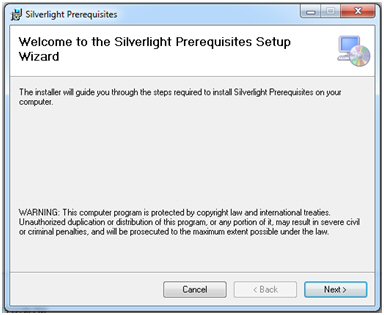
Administrators setting up multiple clients at once may refer to the pzSLpreReqs.cab available in the PRPC 7.1.3 resource kit.
3. Restart browser
Log out of PRPC, close all open sessions and restart your browser.
The PRPC feature integrated with Word merge is now ready for use; Silverlight prompts are no longer displayed.
4. Troubleshooting
Silverlight installation requires access to your file system and a registry setting update to “trust” the associated Verisign certificate. Contact your administrator if you encounter any security or permission errors during this process.
See the PRPC Developer Help for more information on browser setup requirements.
Organization Setup superseded by New Application Wizard
Valid from Pega Version 7.1.3
The Organization Setup Wizard has been retired in PRPC 7.1.3. This feature was previously launched from the Designer Studio > Org & Security > Organization > Organization Setup menu. Users are encouraged to run the New Application Wizard (also known as Application Express) instead:
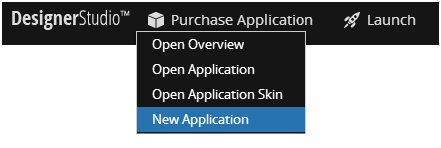
This tool quickly generates an application along with all of the artifacts previously offered by the Organization Setup Wizard. This includes, but is not limited to, the class hierarchy, application rule, organization/division/unit rules, and all relevant data instances.
See the following PDN article for more details on the New Application Wizard:
Create new applications quickly and easily with Application Express
Enabling security policies now requires current password
Valid from Pega Version 7.1.3
As part of Pega’s initiative to protect against malicious attacks, the change password dialog has been enhanced. When Security Policies have been enabled for your system, new users or those with expired passwords will now be prompted for both their existing password as well as their desired new password.
For more details, review the Designer Studio > System > Settings > Security Policies landing page.
Required Oracle optimization parameter
Valid from Pega Version 7.1.3
To optimize performance, set the Oracle parameter optimizer_index_cost_adj to a value between 20 and 25. If this value is not set, the system can run exceedingly slowly, potentially blocking users from login.
Split schema upgrade instructions missing properties
Valid from Pega Version 7.1.3
If you upgraded from 5.x, 6.x, or 7.x using the instructions in previous versions of the upgrade guide, you may have neglected to set the properties below in your migrateSystem.properties file when you migrated your upgraded schema to the source system:
pega.rules.objects.generate=true
pega.rules.objects.apply=true
If these properties were not set during an upgrade that splits the schema, your environment does not have the indexes, triggers, and primary keys on the rules tables.
To check for this issue, see if the pr4_base and pr4_rule rules tables in your existing rules schema are missing primary keys. If they are, use the SQL scripts in the ResourceKit\MigrationRecoveryScripts directory of the release to cleanup duplicate rules that were created due to this issue. Follow the steps below to run the scripts.
To run the scripts on Microsoft SQL, Oracle, or PostgreSLQ
- Take down any app servers using the affected schema.
- Backup your database.
- Replace all instances of @RULES_SCHEMA in <database>_cleanDups.sql with the name of the schema that contains the pr4_base table.
- Run the <database>_cleanDups.sql script on the database with vendor tools (sqlPlus, SQL Server Management Studio, etc).
- Replace all instances of @RULES_SCHEMA in <database>_fix_vw_table.sql with the name of the schema that contains the pr4_base table.
- Run the <database>_fix_vw_table.sql script on the database with vendor tools (sqlPlus, SQL Server Management Studio, etc).
- Generate and apply the ddl using the command line generateDDL command. Check the installation guide for your database or the upgrade guide for details about how to use the generateDDL command line script.
- Rebuild the indexes for the tables in your rules schema using vendor tools. This is necessary so that your system runs at an optimum speed.
- Optionally upgrade to the latest release, at this point your database is ready to be upgraded or used depending on your needs.
To run the scripts on DB2 for LUW or z/OS
- Take down any app servers using the affected schema.
- Backup your database.
- Run the <database>_cleanDups.sql script on the database with vendor tools (UDB CLP, Data Studio, etc) to create the CLEANSE_RULES_DUPS stored procedure.
- Run the query Call CLEANSE_RULES_DUPS(‘<rulesSchema>’); where <rulesSchema> is the name of schema that contains the pr4_base table.
- After the previous step is complete drop the CLEANSE_RULES_DUPS procedure.
- Replace all instances of @RULES_SCHEMA in <database>_fix_vw_table.sql with the name of the schema that contains the pr4_base table.
- Run the <database>_fix_vw_table.sql script on the database with vendor tools (UDB CLP, Data Studio, etc).
- Generate and apply the ddl using the command line generateDDL command. Check the installation guide for your database or the upgrade guide for details about how to use the generateDDL command line script.
- Rebuild the indexes for the tables in your rules schema using vendor tools. This is necessary so that your system runs at an optimum speed.
- Optionally upgrade to the latest release. At this point your database is ready to be upgraded or used depending on your needs.
Synchronized database and application server settings
Valid from Pega Version 7.1.3
Configure your database and application server to use the same time zone and character encoding to avoid conflicts.

